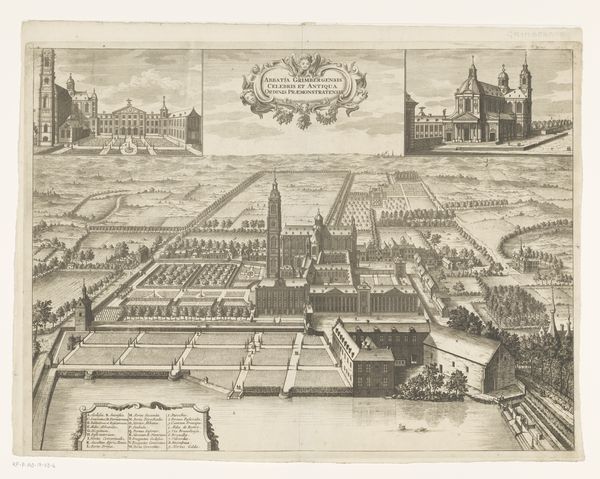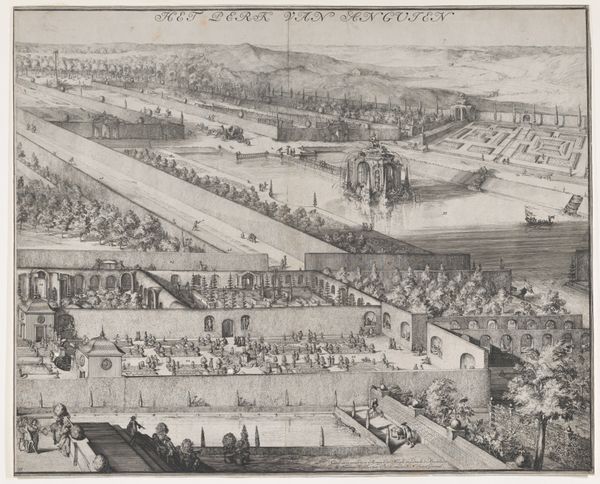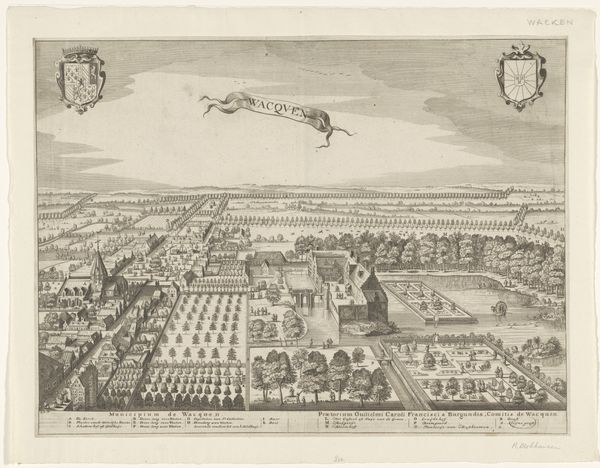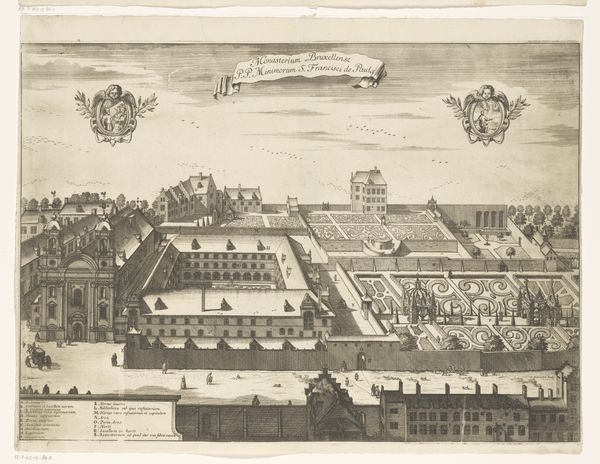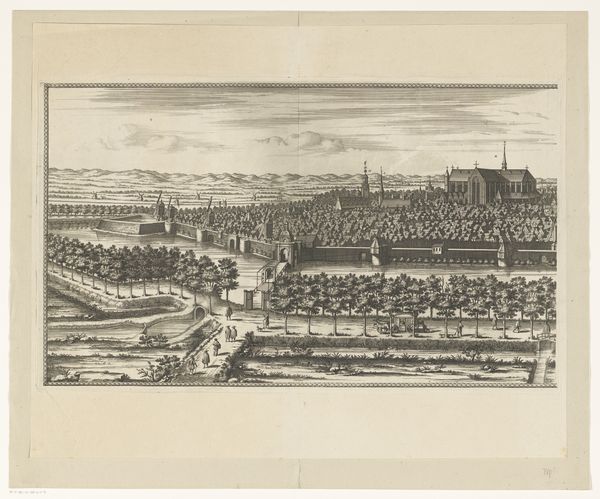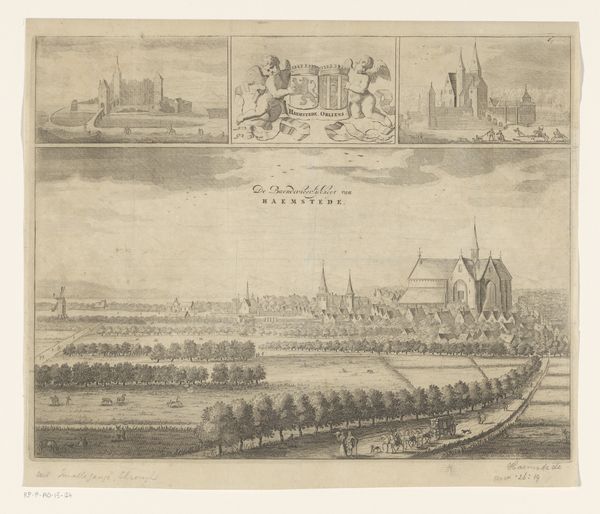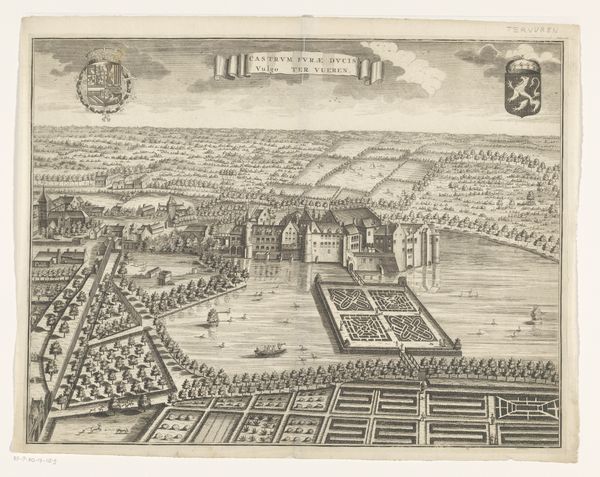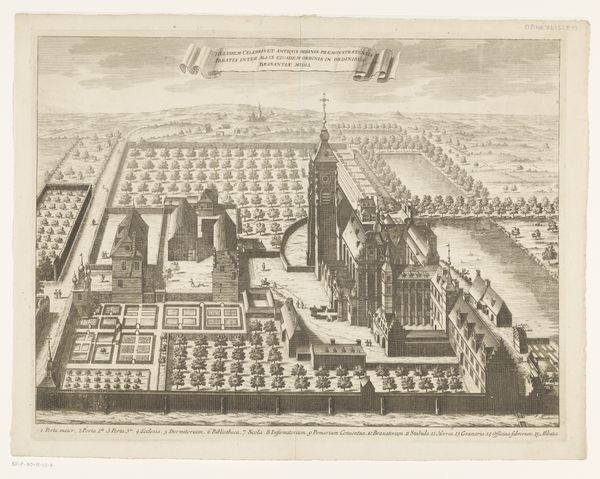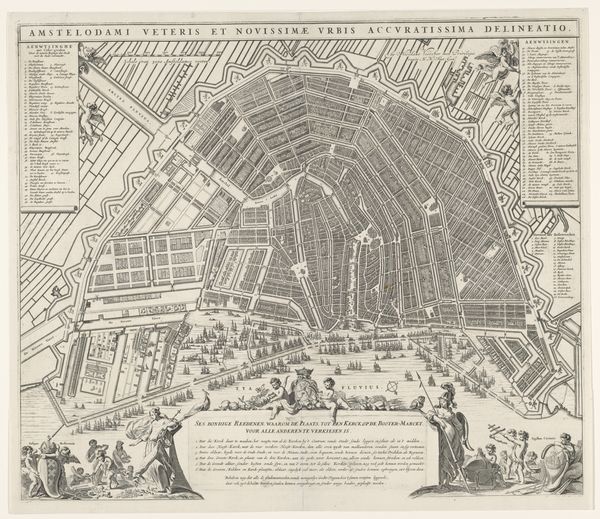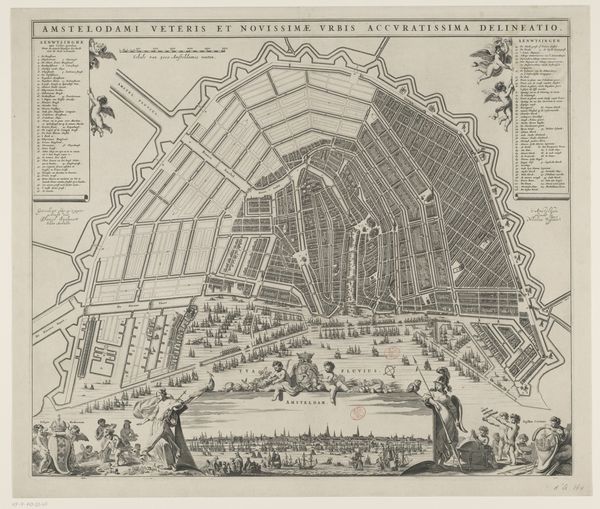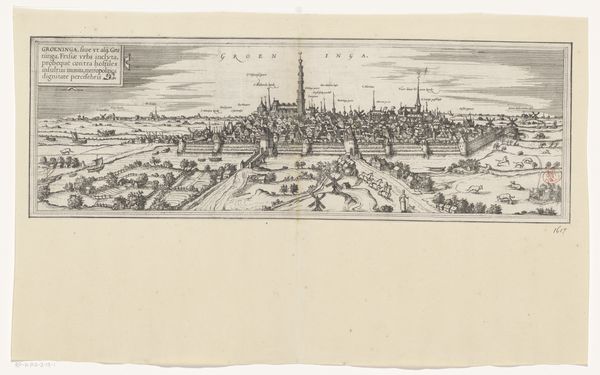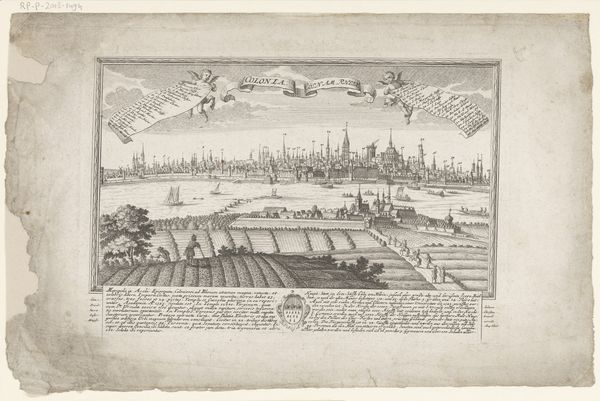
print, engraving
#
dutch-golden-age
# print
#
old engraving style
#
landscape
#
cityscape
#
engraving
Dimensions: height 279 mm, width 400 mm
Copyright: Rijks Museum: Open Domain
Curator: This print, "Gezicht op Oostkapelle," provides us with a detailed view of the village and surrounding landscape. Although the artist is anonymous, its creation is estimated between 1696 and 1728. What stands out to you? Editor: It strikes me as meticulously ordered, yet surprisingly bleak. The lines are precise, almost sterile. It feels like a meticulously planned community, yet somehow devoid of real life. Curator: The formal structure echoes the power dynamics of the Dutch Golden Age, reflecting land ownership and social stratification. Consider the vast fields contrasting with the concentrated village—land as both a source of wealth and control. Editor: Absolutely. And note the church at the town’s heart— a potent symbol of moral and social authority, acting almost as the village's nucleus. But beyond that, the angelic figures adorning the top add a symbolic framing element that is common during the Dutch Golden Age. The artists attempted to tie everyday life into some celestial scheme. Curator: Those figures, combined with the aerial perspective, subtly reinforce a sense of divinely ordained order. Yet, look closer: there are minute figures navigating these fields and streets, asserting a claim on this ordered world. How does the tension between order and individual action speak to contemporary social anxieties? Editor: Well, the repetition of architectural forms and even the carefully planted fields speaks to standardization. The artist might have been alluding to this need of "staying within bounds". It resonates today in the tensions between urbanization, industrialization, community development, and even sustainability in cities. It really invites one to examine systems of order. Curator: A system etched, literally, in ink, representing not just a physical place, but a social architecture. Thank you. Editor: Indeed. A remarkable meditation on organization and belonging in the face of large social phenomena!
Comments
No comments
Be the first to comment and join the conversation on the ultimate creative platform.
